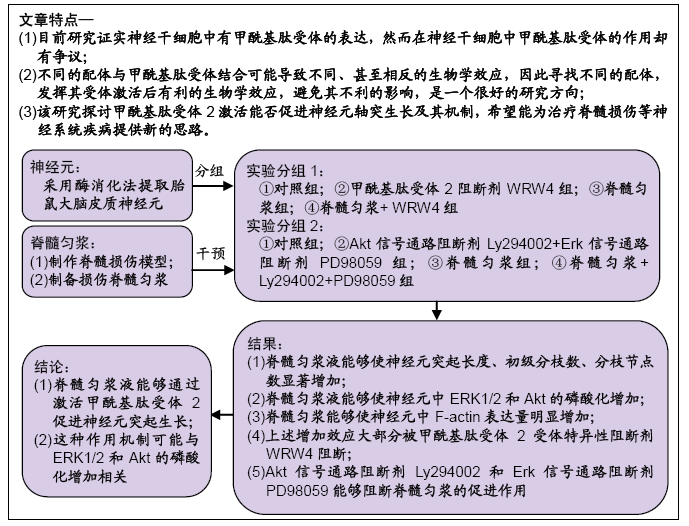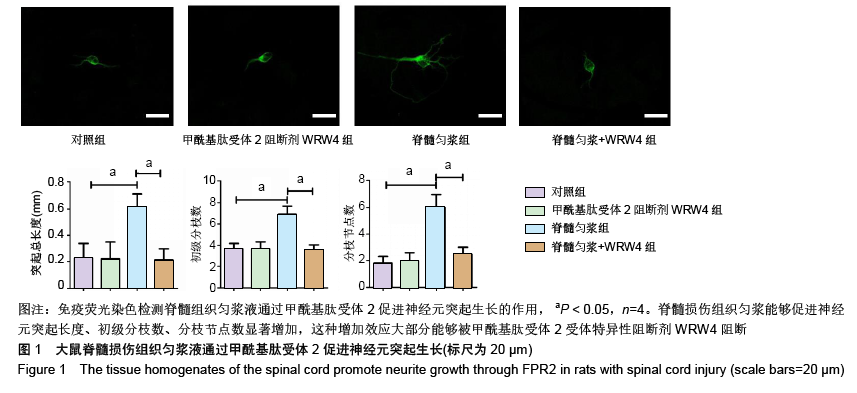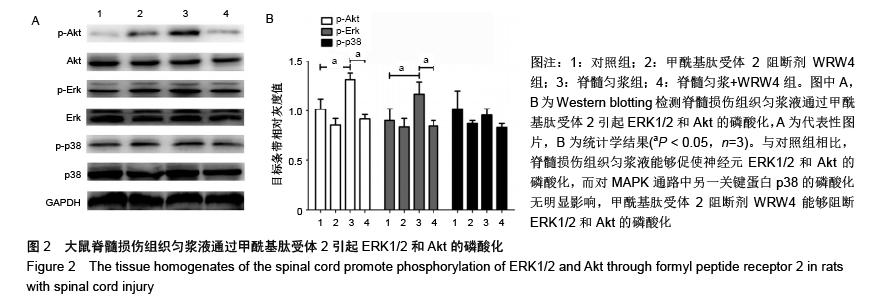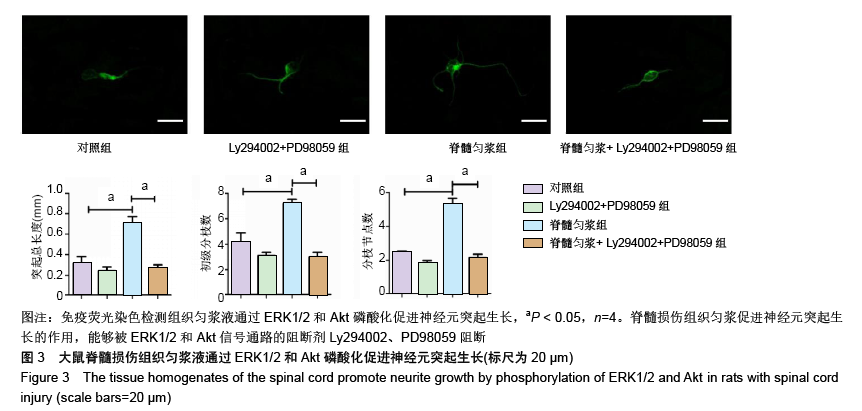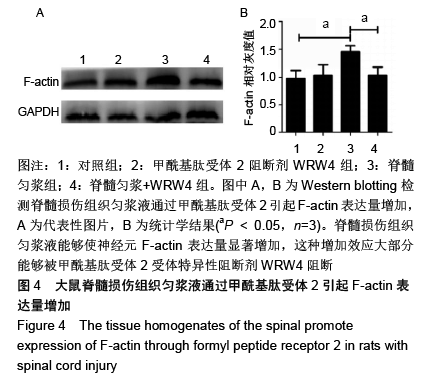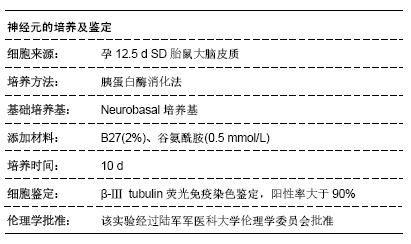[1] NEGRO S, LESSI F, DUREGOTTI E, et al. CXCL12α/SDF-1 from perisynaptic Schwann cells promotes regeneration of injured motor axon terminals. EMBO Mol Med. 2017;9(8):1000-1010.
[2] DENG QJ, XU XF, REN J. Effects of SDF-1/CXCR4 on the Repair of Traumatic Brain Injury in Rats by Mediating Bone Marrow Derived Mesenchymal Stem Cells. Cell Mol Neurobiol. 2018;38(2):467-477.
[3] CHENG X, WANG H, ZHANG X, et al. The Role of SDF-1/CXCR4/ CXCR7 in Neuronal Regeneration after Cerebral Ischemia. Front Neurosci. 2017;11: 590.
[4] STEWART AN, MATYAS JJ, WELCHKO RM, et al. SDF-1 overexpression by mesenchymal stem cells enhances GAP-43-positive axonal growth following spinal cord injury. Restor Neurol Neurosci. 2017; 35(4):395-411.
[5] ZHANG L, WANG G, CHEN X, et al. Formyl peptide receptors promotes neural differentiation in mouse neural stem cells by ROS generation and regulation of PI3K-AKT signaling. Sci Rep. 2017;7(1):206.
[6] KORIMOVÁ A, KLUSÁKOVÁ I, HRADILOVÁ-SVÍŽENSKÁ I, et al. Mitochondrial Damage-Associated Molecular Patterns of Injured Axons Induce Outgrowth of Schwann Cell Processes. Front Cell Neurosci. 2018;12:457.
[7] GENSEL JC, NAKAMURA S, GUAN Z, et al. Macrophages promote axon regeneration with concurrent neurotoxicity. J Neurosci. 2009;29(12): 3956-3968.
[8] GAO JL, CHEN H, FILIE JD, et al. Differential expansion of the N-formylpeptide receptor gene cluster in human and mouse. Genomics. 1998;51(2):270-276.
[9] BAO L, GERARD NP, EDDY RL JR, et al. Mapping of genes for the human C5a receptor (C5AR), human FMLP receptor (FPR), and two FMLP receptor homologue orphan receptors (FPRH1, FPRH2) to chromosome 19. Genomics. 1992;13(2):437-440.
[10] MURPHY PM, OZÇELIK T, KENNEY RT, et al. A structural homologue of the N-formyl peptide receptor. Characterization and chromosome mapping of a peptide chemoattractant receptor family. J Biol Chem. 1992;267(11): 7637-7643.
[11] YE RD, CAVANAGH SL, QUEHENBERGER O, et al. Isolation of a cDNA that encodes a novel granulocyte N-formyl peptide receptor. Biochem Biophys Res Commun. 1992;184(2):582-589.
[12] CHENG TY, WU MS, LIN JT, et al. Annexin A1 is associated with gastric cancer survival and promotes gastric cancer cell invasiveness through the formyl peptide receptor/extracellular signal-regulated kinase/integrin beta-1-binding protein 1 pathway. Cancer. 2012;118(23):5757-5767.
[13] BIZZARRO V, BELVEDERE R, MILONE MR, et al. Annexin A1 is involved in the acquisition and maintenance of a stem cell-like/ aggressive phenotype in prostate cancer cells with acquired resistance to zoledronic acid. Oncotarget. 2015;6(28):25076-25092.
[14] KHAU T, LANGENBACH SY, SCHULIGA M, et al. Annexin-1 signals mitogen-stimulated breast tumor cell proliferation by activation of the formyl peptide receptors (FPRs) 1 and 2. FASEB J. 2011;25(2):483-496.
[15] CHIANG N, SERHAN CN, DAHLÉN SE, et al. The lipoxin receptor ALX: potent ligand-specific and stereoselective actions in vivo. Pharmacol Rev. 2006;58(3):463-487.
[16] YING G, IRIBARREN P, ZHOU Y, et al. Humanin, a newly identified neuroprotective factor, uses the G protein-coupled formylpeptide receptor-like-1 as a functional receptor. J Immunol. 2004;172(11): 7078-7085.
[17] HE R, SANG H, YE RD. Serum amyloid A induces IL-8 secretion through a G protein-coupled receptor, FPRL1/LXA4R. Blood. 2003;101(4): 1572-1581.
[18] HE N, JIN WL, LOK KH, et al. Amyloid-β(1-42) oligomer accelerates senescence in adult hippocampal neural stem/progenitor cells via formylpeptide receptor 2. Cell Death Dis. 2013;4:e924.
[19] RESNATI M, PALLAVICINI I, WANG JM, et al. The fibrinolytic receptor for urokinase activates the G protein-coupled chemotactic receptor FPRL1/LXA4R. Proc Natl Acad Sci U S A. 2002;99(3):1359-1364.
[20] LIU M, CHEN K, YOSHIMURA T, et al. Formylpeptide receptors mediate rapid neutrophil mobilization to accelerate wound healing. PLoS One. 2014;9(6):e90613.
[21] 张良,程惠,冷明昊,等.甲酰基肽受体对神经干/袓细胞向类神经元分化的影响[J].中国组织工程研究,2018,22(1):107-122.
[22] LIU M, CHEN K, YOSHIMURA T, et al. Formylpeptide receptors are critical for rapid neutrophil mobilization in host defense against Listeria monocytogenes. Sci Rep. 2012;2:786.
[23] YOUSEFIFARD M, RAHIMI-MOVAGHAR V, NASIRINEZHAD F, et al. Neural stem/progenitor cell transplantation for spinal cord injury treatment; A systematic review and meta-analysis. Neuroscience. 2016;322:377-397.
[24] RABIET MJ, HUET E, BOULAY F. Human mitochondria-derived N-formylated peptides are novel agonists equally active on FPR and FPRL1, while Listeria monocytogenes-derived peptides preferentially activate FPR. Eur J Immunol. 2005;35(8):2486-2495.
[25] MARASCO WA, PHAN SH, KRUTZSCH H, et al. Purification and identification of formyl-methionyl-leucyl-phenylalanine as the major peptide neutrophil chemotactic factor produced by Escherichia coli. J Biol Chem. 1984; 259(9):5430-5439.
[26] BETTEN A, BYLUND J, CHRISTOPHE T, et al. A proinflammatory peptide from Helicobacter pylori activates monocytes to induce lymphocyte dysfunction and apoptosis. J Clin Invest. 2001;108(8): 1221-1228.
[27] DENG X, UEDA H, SU SB, et al. A synthetic peptide derived from human immunodeficiency virus type 1 gp120 downregulates the expression and function of chemokine receptors CCR5 and CXCR4 in monocytes by activating the 7-transmembrane G-protein-coupled receptor FPRL1/ LXA4R. Blood. 1999;94(4):1165-1173.
[28] GEHRMANN J, MATSUMOTO Y, KREUTZBERG GW. Microglia: intrinsic immuneffector cell of the brain. Brain Res Brain Res Rev. 1995; 20(3): 269-287.
[29] LE Y, MURPHY PM, WANG JM. Formyl-peptide receptors revisited. Trends Immunol. 2002;23(11):541-548.
[30] SHIN MK, JANG YH, YOO HJ, et al. N-formyl-methionyl-leucyl- phenylalanine (fMLP) promotes osteoblast differentiation via the N-formyl peptide receptor 1-mediated signaling pathway in human mesenchymal stem cells from bone marrow. J Biol Chem. 2011;286(19):17133-17143.
[31] ALAM A, LEONI G, WENTWORTH CC, et al. Redox signaling regulates commensal-mediated mucosal homeostasis and restitution and requires formyl peptide receptor 1. Mucosal Immunol. 2014;7(3):645-655.
[32] JANG IH, HEO SC, KWON YW, et al. Role of formyl peptide receptor 2 in homing of endothelial progenitor cells and therapeutic angiogenesis. Adv Biol Regul. 2015;57:162-172.
[33] BECKER EL, FOROUHAR FA, GRUNNET ML, et al. Broad immunocytochemical localization of the formylpeptide receptor in human organs, tissues, and cells. Cell Tissue Res. 1998;292(1):129-135.
[34] WANG G, ZHANG L, CHEN X, et al. Formylpeptide Receptors Promote the Migration and Differentiation of Rat Neural Stem Cells. Sci Rep. 2016;6: 25946.
[35] ZHANG C, WANG ZJ, LOK KH, et al. β-amyloid42 induces desensitization of CXC chemokine receptor-4 via formyl peptide receptor in neural stem/progenitor cells. Biol Pharm Bull. 2012;35(2):131-138.
[36] HO CF, ISMAIL NB, KOH JK, et al. Localisation of Formyl-Peptide Receptor 2 in the Rat Central Nervous System and Its Role in Axonal and Dendritic Outgrowth. Neurochem Res. 2018;43(8):1587-1598.
|
